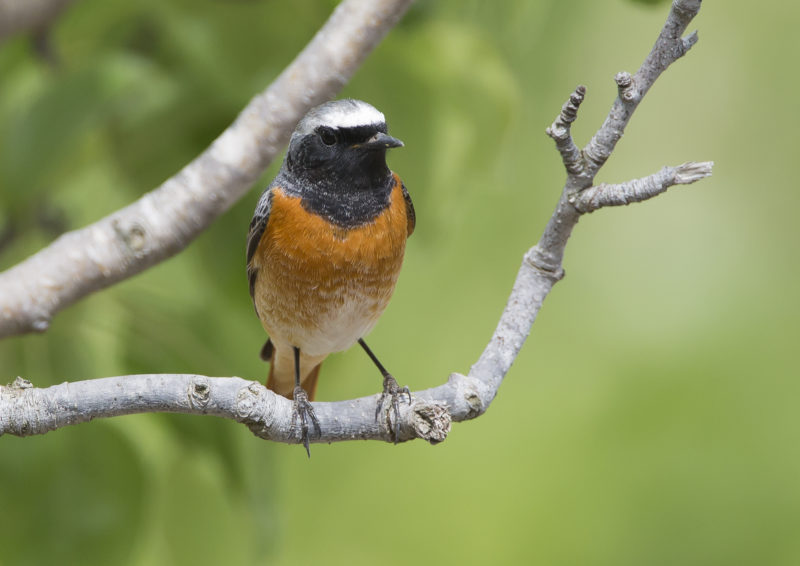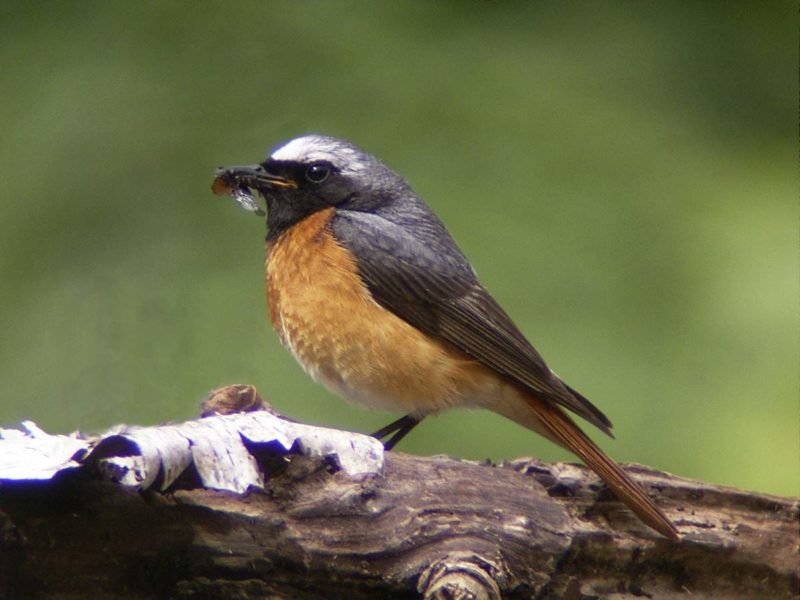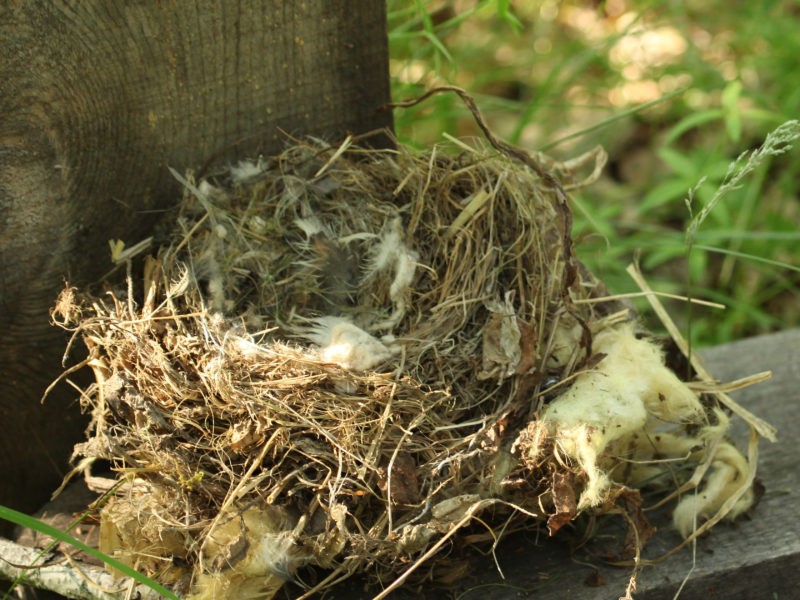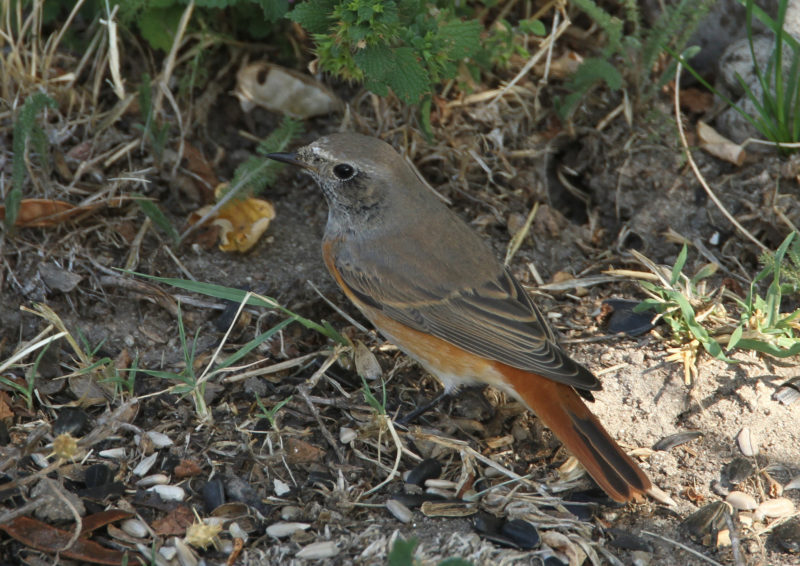This is a slender songbird, a relative of sparrows, but with a more colorful plumage. The common redstart got its “talking" name because of the brownish-red color of the abdomen and tail, which it often twitches. Flames seem to be emerging.
Material Content:
Description and habitat of the species
Common Redstart is also called garden and coot. The Latin name of the species is Phoenicurus phoenicurus. According to the biological classification, this insectivorous bird belongs to the family of flycatchers, the order of the Passeriformes.
The body length of a garden redstart is from 10 to 15 cm, and its mass is from 12 to 23 g. The body of a small songwriter is slimmer than that of a sparrow. The color of the plumage of the female and male is different. The male, as is often the case in the animal world, has a brighter, contrasting color. The male’s head, neck, back, and upper wings are gray. The bases of the wings are rusty red, the breast is bright red. The forehead is white, the plumage on the abdomen and tail are orange-red.
The female is less bright, which makes her subtle among tree branches and shrubs. The general color of the plumage is brownish or brown, with a lighter throat, abdomen and tail. With age, the color becomes contrasting, almost like a male.
The range of the species extends from west to east from the British Isles to Yakutia and Baikal, in the south to northwestern Africa and northern Mongolia. The common redstart lives in the forest and forest-steppe zones, prefers light forest parks, edges of broad-leaved forests.
The bird chooses open areas with low vegetation, birch and oak forests with a small number of shrubs. In the north of the range it is found at the edges of mixed and coniferous forests.Redstart mastered cultural landscapes, found in gardens and parks with old trees.
Changes in habitat, destruction of forests, plowing of land, widespread use of agrochemicals are the main reasons for the decrease in the number of species.
The Redstart was named the bird of the year: in Switzerland - in 2009, in Germany and Austria - in 2011, in Russia - in 2015. These actions are designed to draw the attention of the scientific community and the most diverse sectors of the population on the problems of biodiversity: depletion of the habitat and reduction in the number of useful species .
Character and lifestyle
The redstart, the coot, can be seen sitting on the lower branches of trees, on bushes. She often twitches her tail. The quivering of orange feathers resembles burning, which explains the origin of the names given to the bird in different countries.
The arrival of the redstart in spring is confined to the warming and release of insects. The mating and nesting periods begin in April. In July – August, molting occurs in birds. Already in August and September, the birds are preparing for departure. Redstart overwinter in the south of Arabia and Central Africa.
Power Features
In the countryside, the redstart cod eats in meadows, pastures and gardens. In cities he prefers squares, parks and cemeteries. The bird finds food on the ground and in the air. The main food is insects: bugs, flies, caterpillars, ants. The bees and wasps avoid the redstart.
Butterflies and larvae are especially in demand at the beginning of the season and during the period of feeding the chicks. Spiders, millipedes, wood lice complete the diet. Berries are used as food after the breeding season, when it gets colder and the number of insects decreases markedly.
Breeding
Redstart become sexually mature by the end of the first year of life. In the mating season, which begins in April, the male performs short ritual “pa” in front of the selected female: stretches the body horizontally, raises its wings, makes a throaty sound, reminiscent of a gurgle. Mating occurs if the female takes the courtship of the red-tailed "gentleman".
Nesting
The male goes in search of a place for a nest in old trees, in the voids of the walls of buildings and fences. Redstart often uses natural indentations: a hollow with a wide hole, niches between branches and roots, crevices of rocks. The bird builds a nest at an altitude of 1–5 m above the ground.
The female arrives a little later to approve the place chosen by her husband. It may not like it, then the search for a new one begins. The main work on the construction of the "lady" nest is carried out within 2-8 days. At the bottom of his home arranges a loose base of straw, grass, leaves or needles, pieces of bark. The walls of the nest consist of the same materials, but they are made more accurately, softer due to the addition of feathers, moss, animal hair.
From late April to early May, the female lays 3–9 eggs (usually 6 or 7). Their shape is oval, the color is greenish-blue or bright blue. The bird hatches offspring for 12-15 days.
In a large nesting cavity, two redstart can hatch eggs at the same time.
Hatched chicks are left in the nest for about 2 weeks. After their departure, parents accompany the young animals for some time, help them find food and protect them from enemies. Then the brood begins an independent life. Adult birds in the first half of July are engaged in the second clutch.
Redstart singing
In the nesting period from April to June, sonorous, clear songs of these birds, reminiscent of the sounds of a flute, are often heard. The voice of a redstart is almost the same as that of a zaryanka or robin, but louder. The singing includes melodic trills “fi-fi-fi, fi-it”, gurgling and whistling sounds that gradually subside. The little soloist can make other sounds when she feels danger, imitates surrounding noises.
Interesting facts about the bird
Garden Redstart is an individualist. It is rare to find a flock or a couple of these birds. More often they stay apart from each other.
Interesting facts about nesting and care for the offspring were noticed:
- Not only building your home, but also hatching eggs - activities are almost exclusively for females.
- The bird goes away in search of food once a day for 10-15 minutes.
- If there is no female for a long time, then the male incubates the clutch until the girlfriend returns.
- Parents feed offspring for two weeks in a very intensive mode. During the period of feeding the chicks, a pair of redstart makes up to 450 flights per day.
Parents, after the chicks completely provide themselves with food, proceed to the second clutch. It happens that the created union breaks up, then the former "spouses" go in search of new partners.
For the Redstart family, a food area of 1 ha is required. The highest density of these birds is up to 25 breeding pairs per 1 sq. Km. km
The food for the Redstart is many garden and forest pests.
Summer residents try to attract birds to the sites, make and hang up houses. However, the best "bait" for redstart is old trees, berry hedges.

















